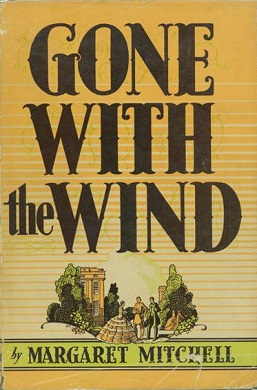
Gone with the Wind is a novel by American writer Margaret Mitchell, first published in 1936. The story is set in Clayton County and Atlanta, both in Georgia, during the American Civil War and Reconstruction Era. It depicts the struggles of young Scarlett O'Hara, the spoiled daughter of a well-to-do plantation owner, who must use every means at her disposal to claw her way out of poverty following Sherman's destructive "March to the Sea". This historical novel features a coming-of-age story, with the title taken from the poem "Non Sum Qualis eram Bonae Sub Regno Cynarae", written by Ernest Dowson.

Louisa May Alcott was an American novelist, short story writer, and poet who wrote the novel Little Women (1868) and its sequels Little Men (1871) and Jo's Boys (1886). Raised in New England by her transcendentalist parents, Abigail May and Amos Bronson Alcott, she grew up among many well-known intellectuals of the day, including Margaret Fuller, Ralph Waldo Emerson, Nathaniel Hawthorne, Henry David Thoreau, and Henry Wadsworth Longfellow.
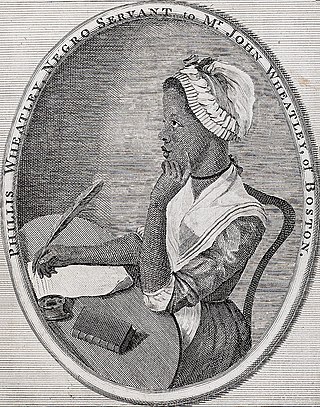
Phillis Wheatley Peters, also spelled Phyllis and Wheatly was an American author who is considered the first African-American author of a published book of poetry. Born in West Africa, she was kidnapped and subsequently sold into slavery at the age of seven or eight and transported to North America, where she was bought by the Wheatley family of Boston. After she learned to read and write, they encouraged her poetry when they saw her talent.
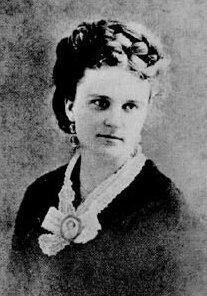
Kate Chopin was an American author of short stories and novels based in Louisiana. She is considered by scholars to have been a forerunner of American 20th-century feminist authors of Southern or Catholic background, such as Zelda Fitzgerald, and she is one of the more frequently read and recognized writers of Louisiana Creole heritage. She is best known today for her 1899 novel The Awakening.

Uncle Tom's Cabin; or, Life Among the Lowly is an anti-slavery novel by American author Harriet Beecher Stowe. Published in two volumes in 1852, the novel had a profound effect on attitudes toward African Americans and slavery in the U.S., and is said to have "helped lay the groundwork for the [American] Civil War".

Gish Jen is a contemporary American writer and speaker.
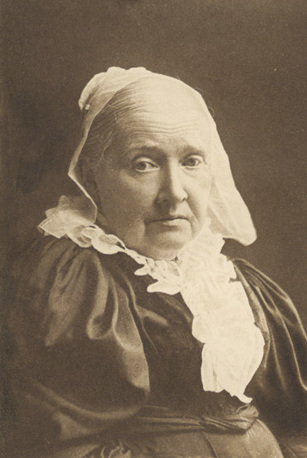
Julia Ward Howe was an American author and poet, known for writing the "Battle Hymn of the Republic" and the original 1870 pacifist Mother's Day Proclamation. She was also an advocate for abolitionism and a social activist, particularly for women's suffrage.
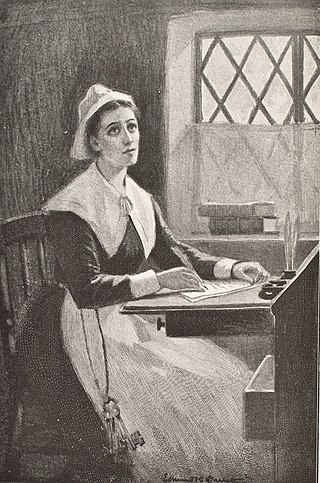
Anne Bradstreet was the most prominent of early English poets of North America and first writer in England's North American colonies to be published. She is the first Puritan figure in American Literature and notable for her large corpus of poetry, as well as personal writings published posthumously.

Edna Ann Proulx is an American novelist, short story writer, and journalist. She has written most frequently as Annie Proulx but has also used the names E. Annie Proulx and E.A. Proulx.
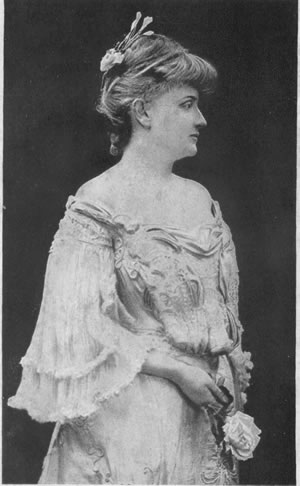
Gertrude Franklin Horn Atherton was an American writer. Many of her novels are set in her home state of California. Her bestseller Black Oxen (1923) was made into a silent movie of the same name. In addition to novels, she wrote short stories, essays, and articles for magazines and newspapers on such issues as feminism, politics, and war.

Elaine Showalter is an American literary critic, feminist, and writer on cultural and social issues. She influenced feminist literary criticism in the United States academia, developing the concept and practice of gynocritics, a term describing the study of "women as writers".
African American literature is the body of literature produced in the United States by writers of African descent. It begins with the works of such late 18th-century writers as Phillis Wheatley. Before the high point of enslaved people narratives, African American literature was dominated by autobiographical spiritual narratives. The genre known as slave narratives in the 19th century were accounts by people who had generally escaped from slavery, about their journeys to freedom and ways they claimed their lives. The Harlem Renaissance of the 1920s was a great period of flowering in literature and the arts, influenced both by writers who came North in the Great Migration and those who were immigrants from Jamaica and other Caribbean islands. African American writers have been recognized by the highest awards, including the Nobel Prize given to Toni Morrison in 1993. Among the themes and issues explored in this literature are the role of African Americans within the larger American society, African American culture, racism, slavery, and social equality. African-American writing has tended to incorporate oral forms, such as spirituals, sermons, gospel music, blues, or rap.

Elizabeth Stuart Phelps Ward was an early feminist American author and intellectual who challenged traditional Christian beliefs of the afterlife, challenged women's traditional roles in marriage and family, and advocated clothing reform for women.
Annie Sophie Cory (1 October 1868 – 2 August 1952) was a British author of popular, racy, exotic New Woman novels under the pseudonyms Victoria Cross(e), Vivian Cory and V.C. Griffin.
Called Back is an 1883 mystery/romance novel written by Englishman Frederick John Fargus under the pseudonym Hugh Conway and published in Bristol by J. W. Arrowsmith.
Genevieve Taggard was an American poet.
The Mediator is a book series which contains six novels written by Meg Cabot. The first four novels were originally published under Cabot's pseudonym Jenny Carroll by Simon & Schuster. The last two books were published by HarperCollins and under Meg Cabot's name. This book is romance–fiction for teenagers and young adults.

Inez Haynes Irwin was an American feminist author, journalist, member of the National Women's Party, and president of the Authors Guild. Many of her works were published under her former name Inez Haynes Gillmore. She wrote over 40 books and was active in the suffragist movement in the early 1900s. Irwin was a "rebellious and daring woman", but referred to herself as "the most timid of created beings". She died at the age of 97.
Edith Summers Kelley was a Canadian-born author who lived and worked in the United States, and is best known for her 1923 novel Weeds, set in the hills of Kentucky.
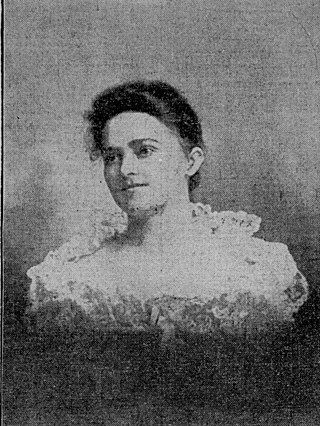
Lucy Meacham Thruston was a writer of historical novels set in the Chesapeake Bay region.



















